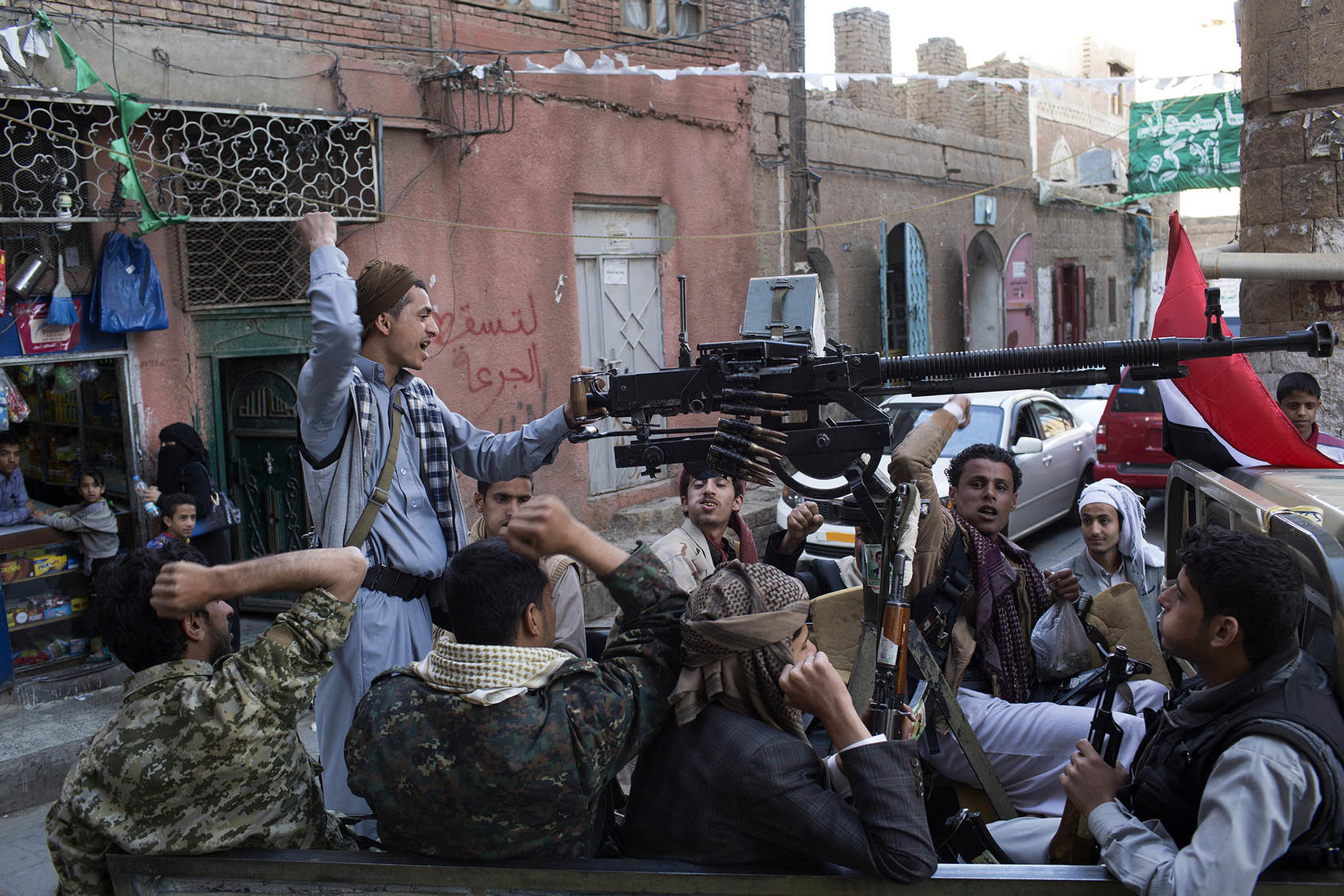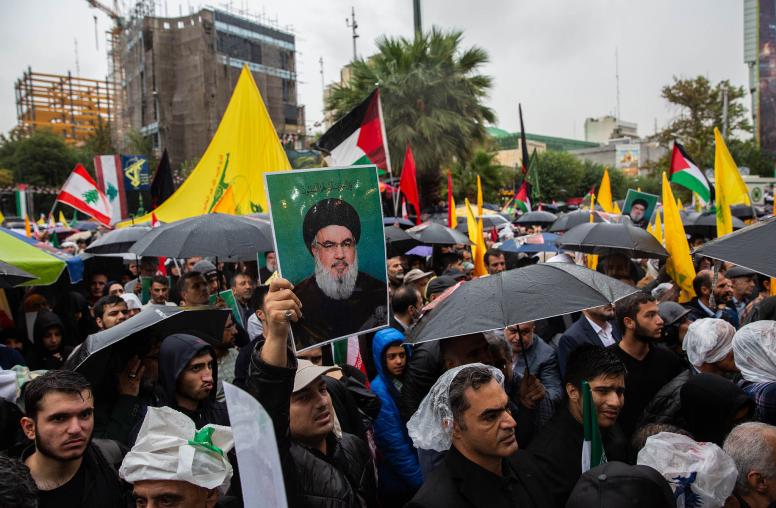A Slippery Slope? U.S., U.K. Launch Strikes on Iran-Backed Houthis in Yemen
Strikes could lead to wider conflict in the region, imperil fragile Saudi-Houthi cease-fire.
On January 12, the United States and the United Kingdom, supported by Australia, Bahrain, Canada and the Netherlands, launched military strikes against Houthi targets in Yemen in response to the group’s attacks on civilian and military ships in the Red Sea. The U.S.-led strikes are a significant escalation and part of the growing regional impact of the Israel-Hamas war, which the United States has been actively trying to prevent from turning into a regional war.

The Houthis’ attacks on ships, which began soon after the start of the Israel-Hamas war in Gaza and which the group claims are in support of Palestinians, have disrupted global shipping and supply chains.
International reaction to the U.S.-led strikes has ranged from criticism from countries like Iran and NATO ally Turkey to calls for restraint from Saudi Arabia to support from other NATO allies like France and Germany.
USIP’s Sarhang Hamasaeed discusses the significance of the latest developments and their broader implications.
What is the goal of the strikes on the Houthis? And what impact would these strikes have on the fragile cease-fire between the Houthis and Saudi Arabia?
The strikes against the Houthis are in response to their attacks, especially the barrage of drones and missiles on January 9, on ships in the Red Sea. They are intended to send a message to the Houthis that their military provocations will not go unanswered.
President Joe Biden, who ordered the attacks, said he would “not hesitate to direct further measures to protect our people and the free flow of international commerce as necessary.” The strikes targeted radars, weapons depots and launching systems in several provinces of Yemen, including the capital Sana’a, port city of Hodeida on the Red Sea and Saada, home of the Houthi leadership.
Despite these strikes, the Houthis still have the ability to attack in the Red Sea and are already threatening retaliation. Further escalation could result in Houthi attacks on interests of the United States and its allies, including Saudi Arabia and the United Arab Emirates, countries that the Houthis have attacked before. These developments would jeopardize hard-won gains in Yemen, including the truce that reduced internal violence and cross-border attacks on Saudi Arabia as well as an ongoing effort to prevent an environmental disaster from FSO Safer. Over a million barrels of oil have been removed from the decaying oil supertanker, which was abandoned off Yemen’s Red Sea coast when civil war broke out in the country.
What kind of support are the Houthis receiving from Iran? Is there now a greater likelihood of a direct confrontation between the United States and Iran?
Iran is a key supporter and enabler of the Houthis. During the Yemen conflict, Iran provided political, military and other forms of support, including training, arms and intelligence. It is believed that Iranian intelligence, technology and weapons have enabled the Houthis to conduct their attacks in the Red Sea.
Supporting the Houthis has been a low-cost investment for Iran. This support has grown to a strategic relationship with high returns. The Houthis do not rank as high in value as Lebanese Hezbollah for Iran, so it is not expected that Iran will directly confront the United States or its allies to help them. However, the active role that the Houthis have taken in attacking Israel and ships in the Red Sea has shown the versatility of Iran’s investments and that their value may have grown.
Earlier this month, Iran sent a warship to the Red Sea as a show of force, but it is unclear if it is willing to do more as it continues to signal that it is not seeking war. Yet, Iran-backed groups in Iraq and now in Yemen have directly targeted U.S. military assets. In both countries, the United States has exercised patience, tried through diplomatic channels to stop such attacks and only responded as a last resort. Iran and its allies may have thought the United States does not have the appetite for a major response and that they can accept some pain — for example, retaliatory military action from the United States — for the benefits they perceive — for example, a rise in their profile and deepening of their regional role — from confrontation with a superpower. People with anti-Iran sentiments in Iraq and Yemen hoped that the United States would target leaders of Iran-backed groups to show the seriousness of the United States, roll them back and create deterrence. This is all risky territory with lots of room for miscalculation and escalation.
What are the potential scenarios that might unfold in relation to Houthi activities in the Red Sea, and how should the international community prepare for them?
There is potential for the situation in Yemen and the Red Sea to worsen in different ways.
The Houthis are likely to continue to escalate with respect to the scale and complexity of their attacks on Red Sea-based targets. They may expand their attacks to include military and civilian ships of other nations that are part of Operation Prosperity Guardian or even all ships passing through the region. As a result of the Houthis’ attacks, shipping companies are already avoiding the Red Sea, increasing the time and cost of shipping.
The Houthis are monitoring Saudi Arabia and the UAE in the event that those two countries support action against them, in which case they may resume attacking those countries. The fragile truce between Saudi Arabia and the Houthis that has been holding for more than a year may break, which would be a major setback and could also rekindle conflict with the forces fighting under the banner of the internationally recognized Yemeni government.
Speaking at an event at USIP in October, U.S. Special Envoy for Yemen Tim Lenderking highlighted the progress in Yemen to end the war and stressed the need for preserving those gains, because Yemen cannot afford another war.
In terms of the international community’s response, expanding the coalition contributing to Operation Prosperity Guardian is one way to increase global pressure on the Houthis. The U.N. Security Council Resolution on January 10 condemning the Houthi attacks and demanding they stop is an important step toward building a global response, although China and Russia abstained from voting.
What lessons can the United States and its allies learn from Saudi Arabia’s experience in its war with the Houthis?
The objectives of Saudi Arabia’s military intervention in Yemen included stopping Houthi attacks on its territories, but also changing the balance of power in Yemen through the use of military force.
A key takeaway from the Saudi intervention is that the use of force and prolonged conflict served the Houthis more. It feeds into their narrative of standing up to an outside aggressor — now a global coalition led by a superpower, not just a regional one led by Saudi Arabia — while they stand for what is righteous.
Another takeaway is that in an attempt to contain the Houthis, the Saudis restricted access to ports and prevented flights to Houthi-controlled areas. Ordinary Yemenis suffered the most as a result and public opinion toward Saudi soured.
The sooner the war in Gaza winds down, the sooner it will take away the excuse for the Houthi attacks on ships in the Red Sea. In the meantime, the United States and its allies have the difficult task of avoiding the slippery slope of being drawn into the conflict in Yemen.



